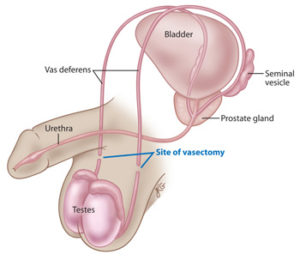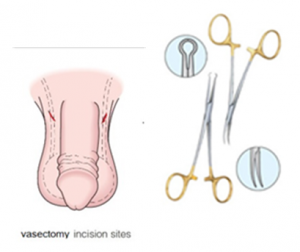
Vasectomy

This is a procedure for male sterilization. The two tubes (vas deferens) that carry sperm from the
testicles out to the urethra are surgically disconnected.
How it is done
This operation is easily done under local anesthesia as a day case and takes 30 mins. An incision 1 cm long is made over each side of the scrotum. Using a special-designed ring forceps, the vas is delivered out and a short section of it is removed. The ends are tied with absorbable sutures. The skin cuts are then closed with self-absorbing stitches.

Instruments used for vasectomy
Unlike female sterilization which is immediately effective, there is still the need for back-up contraception because it takes about 2 months to clear the rest of the sperms within the vas. This is verified by sending a semen sample after 2 months post-surgery. Only when the sperm count is zero is it safe to have sex without contraception.
“Scapeless or Non-scapel“ vasectomy is a variant of the same technique. The most important aspect of vasectomy is to remove the correct tube (the vas) and separate the ends using a fail-safe method.
Complications include:
- haematoma (blood clot). This may need evacuation if the clot is large
- infection. The wound or epididymis may get infected. If so, antibiotics are given
- sperm granuloma. This is a pea-sized lump that forms should sperm leak from the cut vas. Most sperm granulomas are asymptomatic but sometimes require excision
- failure. This can occur should both ends of the vas reconnect later. The reason for this is poor technique – either the ends were not ligated properly or the gap between the two cut ends was not distanced enough
Desire outcomes:
- no haematoma ( < 1% occurrence )
- no infection ( 1% risk )
- no sperm granuloma (< 1% chance )